Autonomous sewerage in a private house - how to choose. Types of septic tanks
Life in a country house has long ceased to resemble life in field conditions. In the current country houses there are full bathrooms, bathrooms, sinks, in some houses there are even swimming pools, saunas and baths. However, these attributes require not only the supply of water, but also the further disposal of wastewater. The sewerage of the house is one of the most important systems that ensures comfortable living in the house. There are several main types of septic tanks or, as they say, autonomous sewers. In this article, we will just discuss what types of them exist and how to choose an autonomous sewer for a country house.
2.
2.
To make an autonomous sewage system in a private house, you need not only to place communications inside the building, but also consider what to do next with the drains: just accumulate in a container or a deep cleaning station will be needed. Look at the options available today.
Autonomous sewerage in a private house - selection rules
When choosing an autonomous sewer, the first thing to do is to think about where the drains from the house will be discharged. The choice of a septic tank largely depends on individual factors for each case. Factors influencing the choice:
- The level of occurrence of groundwater. Is it possible to flood the site during spring floods;
- Type and structure of the soil on the site (chernozem, peat, clay, sand, etc.);
- Features of the climate in which the site is located, and the depth of soil freezing;
- The number of people living in the house;
- The amount of water consumed daily by one person;
- Plot dimensions. What area can be allocated for the installation of treatment facilities;
- Site relief. Is there a slope and, if so, in what direction?
In total, there are several types of autonomous sewerage of a country house. Each of the considered options is well applied in this or that case.
Types of septic tanks
Sealed septic tank
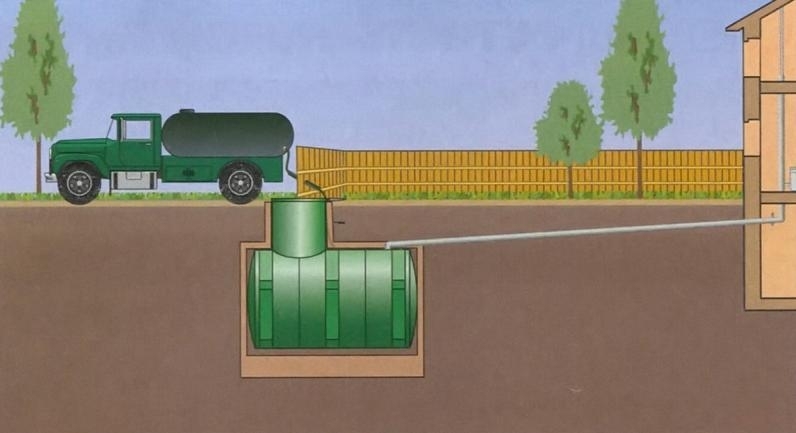
A sealed container for draining can be made of concrete, brick or some kind of plastic. Effluent is drained into this container and accumulated. During the operation of the container and its filling, it is necessary to involve a sewage machine to pump out the contents of the septic tank. In practice, it is noted that such a container is filled quite often. Therefore, the relatively small cost of building such a septic tank is offset by the constant call of sewers to pump it out. This option is suitable if 1-2 people permanently live in the house or residents appear from time to time, i.e. there are no permanent residents in the house. This option is also suitable for a house located on a site with a high level of groundwater or which is subject to seasonal flooding.
Two-chamber septic tank or overflow wells
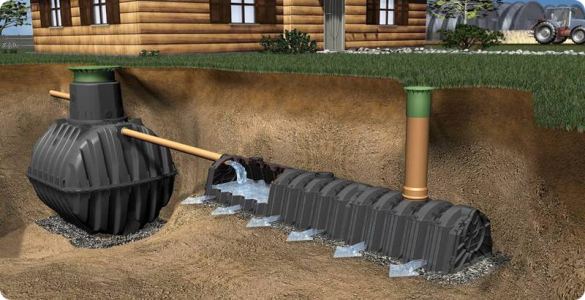
It is possible to buy a similar type of autonomous sewer ready-made or build it yourself. In this form of a septic tank, the first container has a sealed bottom and is used to allow wastewater to settle: solid elements settle to the bottom, light particles float to the surface, and the water purified from these elements remains in the middle. It is this water that is poured into the second well through the overflow pipe, which no longer has a sealed bottom. In the second well, this water is purified by passing through layers of sand, gravel and soil. Over time, an excessive amount of sludge is collected in the first well, which also needs to be pumped out with the help of sewers. The pumping frequency is on average once every 4-6 months for a family of 4-5 people. This type of treatment plant is only possible in a site where the groundwater level never reaches more than 1 meter from the bottom of the septic tank, and the ideal case would be sandy or sandy soil of the site.
Septic tank with filtration field
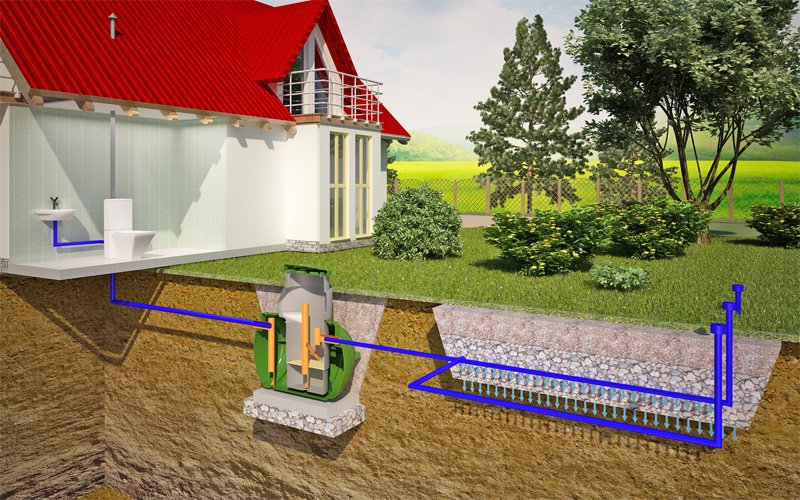
This type of treatment plant requires a large amount of free space. It is a container that is divided into 2-3 sections. The first is necessary for settling water. The second is intended for processing by anaerobic bacteria. The third section is a distribution well, from which a pipe exits to the filtration field. The field itself should occupy about 30 m2 below the ground at a depth of at least 1 meter, which is covered with sand and gravel. Water passing through the filtration field is finally clarified and penetrates into the soil. This type of treatment plant should be chosen for large areas in which there is a lot of free space, and the groundwater level is not higher than 3 meters from the surface.
Biological treatment station
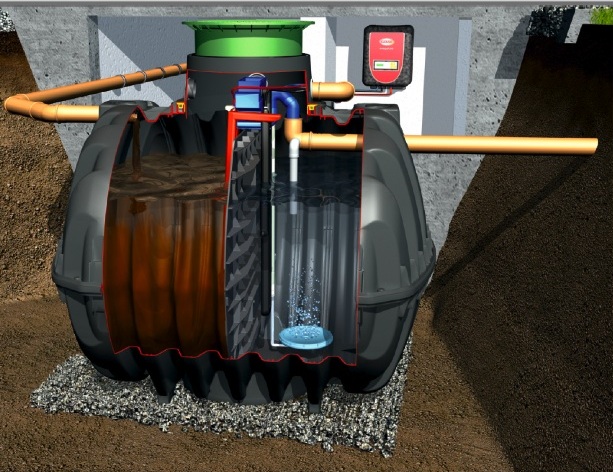
Such a septic tank is a container, which is divided into 3-4 parts. In each section, a certain part of water purification takes place. Cleaning occurs with anaerobic and aerobic bacteria. After cleaning in such a septic tank, technical water is obtained, which can be used for household needs. The drain is cleaned by 98-99%, which is undoubtedly a high figure. The bacteria used in the construction are added independently, you can, for example, pour them into the toilet bowl. A huge plus of such a structure is autonomy and energy independence.
Artificial cleaning station
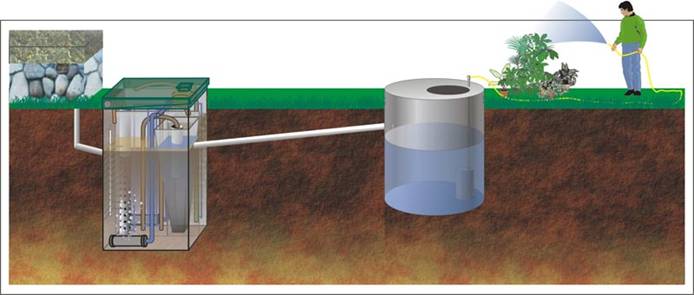
This type of septic tank differs from the previous septic tank in the type of bacteria used. The bacteria used in this facility require a constant supply of fresh air. To such a station, it is necessary to supply electricity, from which the pumping and air pumps are powered. The cost of such a treatment plant is quite high, but its undoubted advantage is that it can process more waste than a septic tank with a biofilter.
The last two autonomous sewage systems of country houses are suitable even for cases where the groundwater level is high, the site is flooded or there are many people living in the house. As can be seen from the described types of septic tanks, there is plenty to choose from, but when choosing, you must take into account the starting conditions and the available budget.
Video
A useful video about choosing autonomous sewer systems for a country house.









